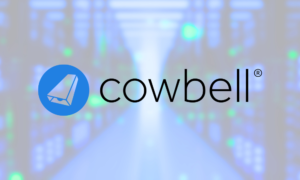We now have a “digital wildfire” expanding rapidly every day, reshaping every aspect of our customers’ lives and businesses.
While the industry had digital as a “priority” in nearly every survey the last few years, the events of 2020 have accelerated its importance – creating a tipping point for insurance. Malcolm Gladwell’s bestseller, The Tipping Point, described this phenomenon as a “magic moment when an idea, trend or social behavior crosses a threshold, tips and spreads like wildfire.” We now have a “digital wildfire” expanding rapidly every day, reshaping every aspect of our customers’ lives and businesses.
The COVID-19 crisis exposed less than desirable customer experiences due to manual, paper-bound processes, non-digital post-service transactions like claims, payments, printing, mail, a rise in online insurance purchases and the need for extra caution due to fraud. Projects are getting reprioritized for this and next year to adapt to this new reality. But companies need to consider prioritizing investments in the digital platforms that will meet their needs today and in the future.
Digital Insurance Platforms – Digital Wildfire Creates A Burning Platform
We have been writing and talking about digital platforms for a few years, including in our thought leadership report, Insurance Platforms – A Burning Platform for Market Leadership in the Digital Era of Insurance. Through our research over the last five years, we have found a top motivator for digital transformation is the need to meet customer and distribution channel expectations of a much-improved experience. We identified a strong intersection of business and consumer technology trends that are relevant to the insurance industry that require a new insurance platform. The insurance platform lays the groundwork of a new digital insurance business model defined by a focus on customer experience, business innovation and technological leadership, with rich and robust capabilities that will enable speed to value as a digital insurer.
In the insurance platform report, we define a platform as an architected, networked system that provides access to a broad set of services, data and other capabilities; is continuously and seamlessly upgraded with newer technology, content and functionality; is accessed via APIs that are part of a robust, extensive API catalog; enables personalized customer engagement; is cloud-based, with a designed-to-scale, pay-per-use pricing model; leverages AI and machine learning through embedded capabilities; is flexible to aggregate heterogeneous services from multiple providers (technology, data, insurtech); and enables rapid “test and learn” for new business models and products while supporting current operational business models.
Fundamentally, the insurance platform model replaces the old paradigm of the integrated suite of core insurance systems focused on transactional processing with “one-size fits all” portals over the core. While that approach enhanced the traditional business of insurance of the last few decades, it does not meet the demands and expectations of a new era of insurance because it leaves unchanged the nature of the business model and the products that insurers sell.
Today’s next-generation insurance platform uses cloud-based technology architecture to unite core insurance processing systems — policy, billing, claims — with advanced digital and data/analytics capabilities and third-party services delivered via application programming interfaces (APIs) that will enable the customer-led digital transformation. Furthermore, platforms enable innovative companies to create speed to value, unique customer engagement, a “test and learn” platform for minimal viable products and value-aligned, optimized costs.
Source: Insurance Thought Leadership
LinkedIn
Twitter
Facebook

Coalition Finds Over Half of Cyber Insurance Claims Originate in Email Inboxes
April 25, 2024
Coalition, the world’s first Active Insurance provider focused on preventing digital risks before they occur, has released its 2024 Cyber Claims Report.

65% of North American Business Leaders Fear Election Year May Impact International Trade
April 25, 2024
As the 2024 election season unfolds, 65% of North American business leaders are concerned that political risks may negatively affect their ability to trade internationally.

Allstate May Resume Writing Homeowners Policies in California Amid Insurance Crisis
April 25, 2024
Allstate Insurance may soon start offering new homeowners policies in California again, provided the state Department of Insurance allows the use of catastrophic modeling when requesting rate increases.








